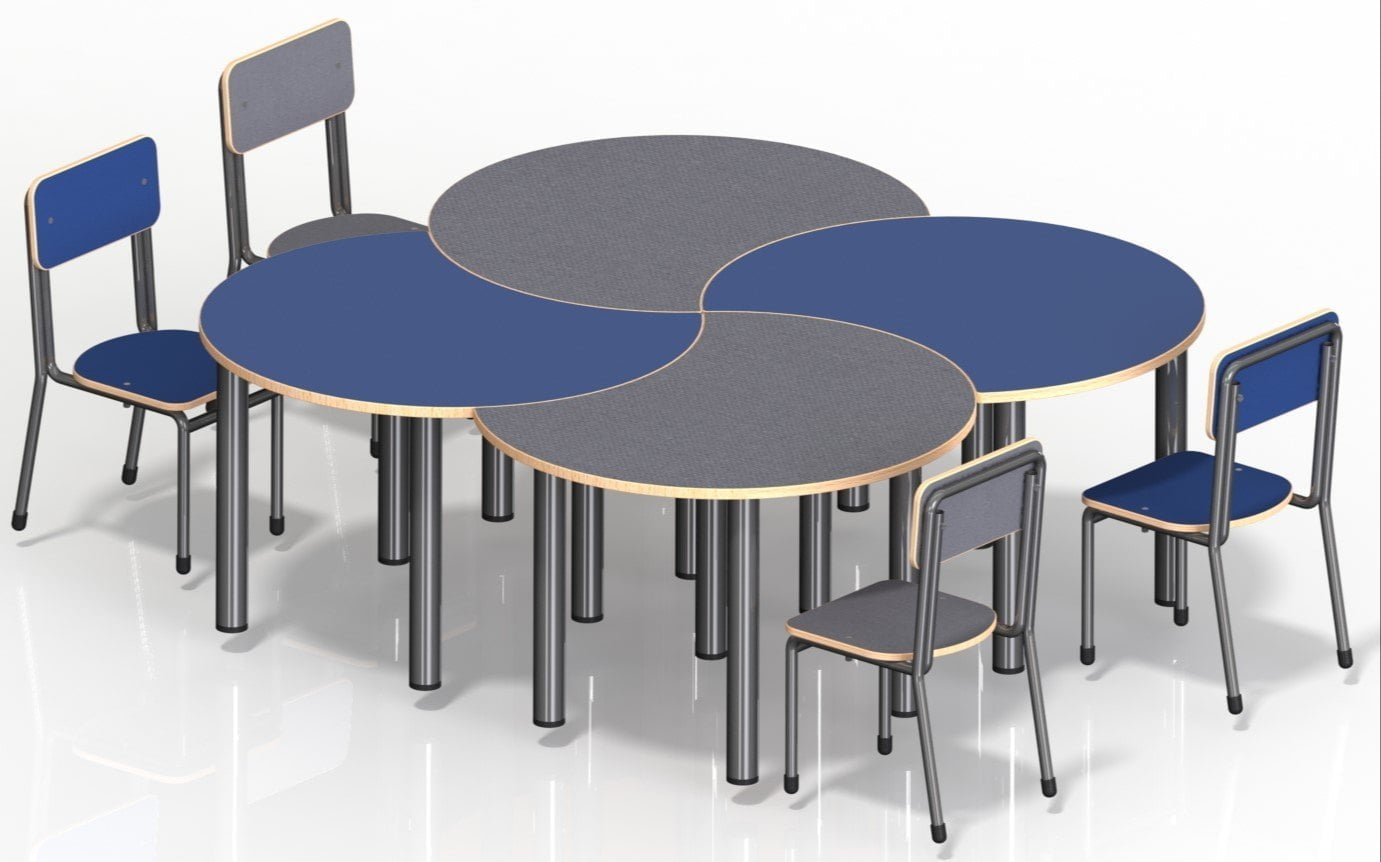
Innovations in Play School Furniture: Trends Shaping Chennai’s Early Education Spaces
Introduction
Have you noticed how the current play school setup has changed exponentially? It is indeed a pleasant sight to see how drastically the ambience has been modified. The next time you visit a playschool you will notice how the old wooden desks have been replaced with eye-catching and vibrant furniture that adds character and cheerfulness to the entire space. A change in setup of playschool’s furniture leaves a positive impact as it has the power to transform the environment substantially. School furniture manufacturers have seen the demand for play school furniture go through the roof.
Nevertheless, it’s still seen that many schools still are not equipped to change the environment and make do with traditional setups of desks and chairs while the teacher stands in front of the classroom. This method of classroom setup does not bring about personalized learning experience, child-to-child interaction and effortless assimilation of technology.
Flexible and Multi-functional Furniture Designs
Furniture plays a major role in what is now called a “flexible classroom”. Any format of classroom that supports and helps with student-teacher interaction and communication and collaboration is a Flexible Classroom. This helps with building a connection with children and their teachers as it helps with their learning methods. The primary issue with traditional desks is that it limits the movement of children. Let’s say if the teacher wants the children to sit around in a circle for an activity it is difficult to push heavy desks and chairs across the room with kids in it. Not just that, it is time consuming and chaotic.
It is recommended to consider introducing something that is adaptable, adjustable and flexible with all structures in your school. Flexible furniture can be incorporated with careful planning and proper guidance by expert designers. Schools can take the initiative of introducing flexible furniture without making significant changes in infrastructure. The change in classroom furniture may seem to be inconsequential design detail but it has the ability to completely change the environment of the classroom many fold and for the better. It has been seen that children thrive in an surroundings where teacher-child interaction is free and flexible.
A lot of research has been done to prove that incorporating flexible classroom furniture improves the process of learning exponentially. This happens because of the new space created for students that helps with different styles of learning and activities in the classroom.
Incorporating Nature and Sustainability in Furniture Choices
Our society is moving towards a conscious and sustainable environment and is growing more with time. This shift is required in all facets of life, including work and learning spaces. This growing awareness has created a magnanimous change in the furniture industry and eventually given rise to increase in demand for sustainable furniture. The ability for a furniture to be aesthetically appealing as well as eco-friendly makes it a sustainable option. Lets explore the factors that make furniture sustainable and eco-friendly.
- Manufacturing Method – The method used to manufacture furniture should have a low carbon footprint. Minimisation of waste, use of renewable energy sources and avoiding harmful chemicals should be few prime factors of sustainable and eco-friendly manufacturing methods.
- Material – Furniture that is recycled, re-purposed and reclaimed or sourced from well-managed forests is sustainable. Bamboo, Recycled plastic, metal and FSC-certified wood are eco-friendly materials.
- Durability – Furniture that is built to last and disapproves of throwaway habits is sustainable. In that way you will not be contributing to increased waste and pollution. This reduces the need for frequent replacements
- Recyclability – It is crucial to focus on recyclability and ability to naturally decompose to minimize the impact on landfills. Manufacturers should ensure and focus on these factors to make their furniture more eco-friendly and sustainable
Technology Integration in Play School Furniture
Integration of technology in this ever-evolving educational sector is getting crucial with time. The merge of tech with furniture is not just for looking up to date but for easier interaction, quicker learning experience, better comfort and hassle-free learning space. Furniture industry has seen a spike in tech-integrated furniture in schools.
These include interactive whiteboards that can open up as student tables, built-in charging stations and ergonomic chairs that promote comfort and better learning experience. These furniture transform traditional classrooms to high-powered learning spaces.
Tech-integrated furniture facilitates engagement and collective learning. This fusion of tech and furniture promotes focus and caters to various learning needs.
Collaborative and Interactive Learning Environments
Interactive Learning
A teaching method that actively engages children with hands-on activities and involves interaction is called Interactive learning. Interactive learning intends to capture children’s attention and interest and deepen their understanding and help with their overall growth. Interactive learning may include : Educational Kits, Multimedia sources and Hands-on activities and experiments.
Collaborative Learning:
A method of learning that involves teamwork among children where they are encouraged to work together, share and learn is called Collaborative Learning.This kind of learning builds the child’s social skills, communication and collaboration as there are plenty of opportunities for conversations and learning activities.
Child-Centric Design Principles
4 factors are key when it comes to child centric design principles.
- Safety – This principle is the most important to ensure the well-being of the child. They are active and vulnerable to injury therefore design of the furniture has to maintain safety standards. Secondly the structure of the furniture has to be sturdy so that it can withstand all kinds of pressure and forces.
- Utility: A child’s classroom is a world on its own so the space has to be large and the furniture has to be light, small and flexible. The design must support the utility of the furniture as well. It requires to follow the principles of ergonomics and must be suitable for age and body of children
- Fun – Childrens furniture is supposed to reflect their nature and be engaging, interesting and a tool that makes learning fun as well. Therefore the principle of adding fun to child’s furniture is to make sure the element of fun and ability to explore is achieved.
4. Color – Along with the design, play schools must stimulate learning through colors as well. Furniture that is colorful and has a learning element to it helps boost the child’s imaginative skills.
Innovative Play School Furniture Installations in Chennai
Chennai as a city has several furniture manufacturers who have decades of expertise in the furniture industry. Top school furniture suppliers support South India’s largest production facility with state-of-the-art products. Product customisation is done as per the customer’s requirement and bulk order can be done as well. A complete range of furniture for play schools to colleges is available. Every requirement of furniture from Pre-Kg to PG is catered in the large market of the city. Play School Furniture manufacturer in Chennai offer a wide variety of furniture with the fusion of technology that cater to a flexible learning environment for children.
Conclusion
Simple changes made by school administration can go a long way towards encouraging class participation and improving learning experience for children. Everything from convertible desks attached with chairs, study adaptable desks, modular study carrels and so much more which contribute towards a flexible classroom. Adaptable study and seating helps children in collaborative learning to learn anytime anywhere.
Every educational institution’s success depends on how well it understands and provides for its students. A deep analysis of the school’s structure and didactics is a sensible way to move forward before investing in a full fledged transformation of the school’s furniture. By understanding the activities that is going around in the school it will be easier to determine the requirements and get the right furniture for the style of learning.
It is crucial to prioritize safety. We need to make sure that the furniture is made with durable and eco-friendly materials. To ensure the safety standards along with its resistance to wear and tear we need to make sure that children are supervised while using them or playing with them.
Schools are taking a 360-degree facelift to make sure that there are no hindrances in a learning space for kids. The new designs that are light, durable and eco-friendly can be customized in all shapes and sizes. Such futuristic designs help children to concentrate better and grasp lessons easily. The light movable modern-day furniture enables adaptive learning and allows children to come up with creative conclusions.
A creative furniture designer will help integrate innovative solutions that work best for classrooms in your playschool. They will take the required amount of time to understand the activities around your playschool and help you cater to the pedagogy of the learning space. This will help children learn better with the right comfort, element of fun and fusion of technology. Play Schools will be a place for them they would look forward to coming back to every day.






